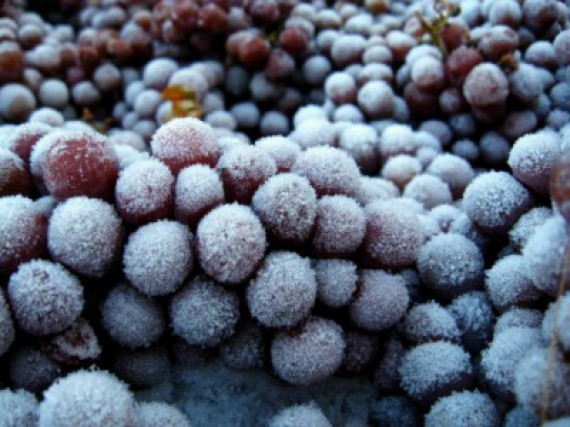 Normally, we think of winter and freezing temperatures as being deadly to wine production and vineyards. But the history of drinking is filled with some pretty smart, resourceful people and of course, they figured out a way to deal with frozen grapes. What happens when you use frozen grapes to make wine?
Normally, we think of winter and freezing temperatures as being deadly to wine production and vineyards. But the history of drinking is filled with some pretty smart, resourceful people and of course, they figured out a way to deal with frozen grapes. What happens when you use frozen grapes to make wine?
Ice wine, obviously.
Ice wine is a very sweet dessert wine. It’s so sweet because the frozen grapes are pressed, causing the juice to come out and the frozen water to get discarded. That juice is high in sugar and acid, which means the wine is overly sweet and normally distributed in smaller amounts.
It’s tricky though because you can’t let the grapes rot on the vine and then freeze – you need that first frost to come before the grapes have a chance to get gross. Because of that, ice wine is really only successfully made in locations that are cold on a pretty regular basis. Ice wine originated in Germany, and is becoming pretty huge in Canada now as well.
A few places in the U.S. have tried their hand at ice wine production, including Northern Michigan, Colorado, Washington, and the Niagara region of New York (and Canada).
If you’ve got your passport handy, you may want to consider crossing the border over the next couple of weeks because the Niagara Icewine Festival begins today in Canada and runs until January 27. There are lots of different wine and cheese seminars, The Ice Queen’s Ball, a Winter WineFest, and Niagara-on-the-Lake Icewine Festival.
Ice Wine is typically a little too sweet for our liking, but what do you think?

